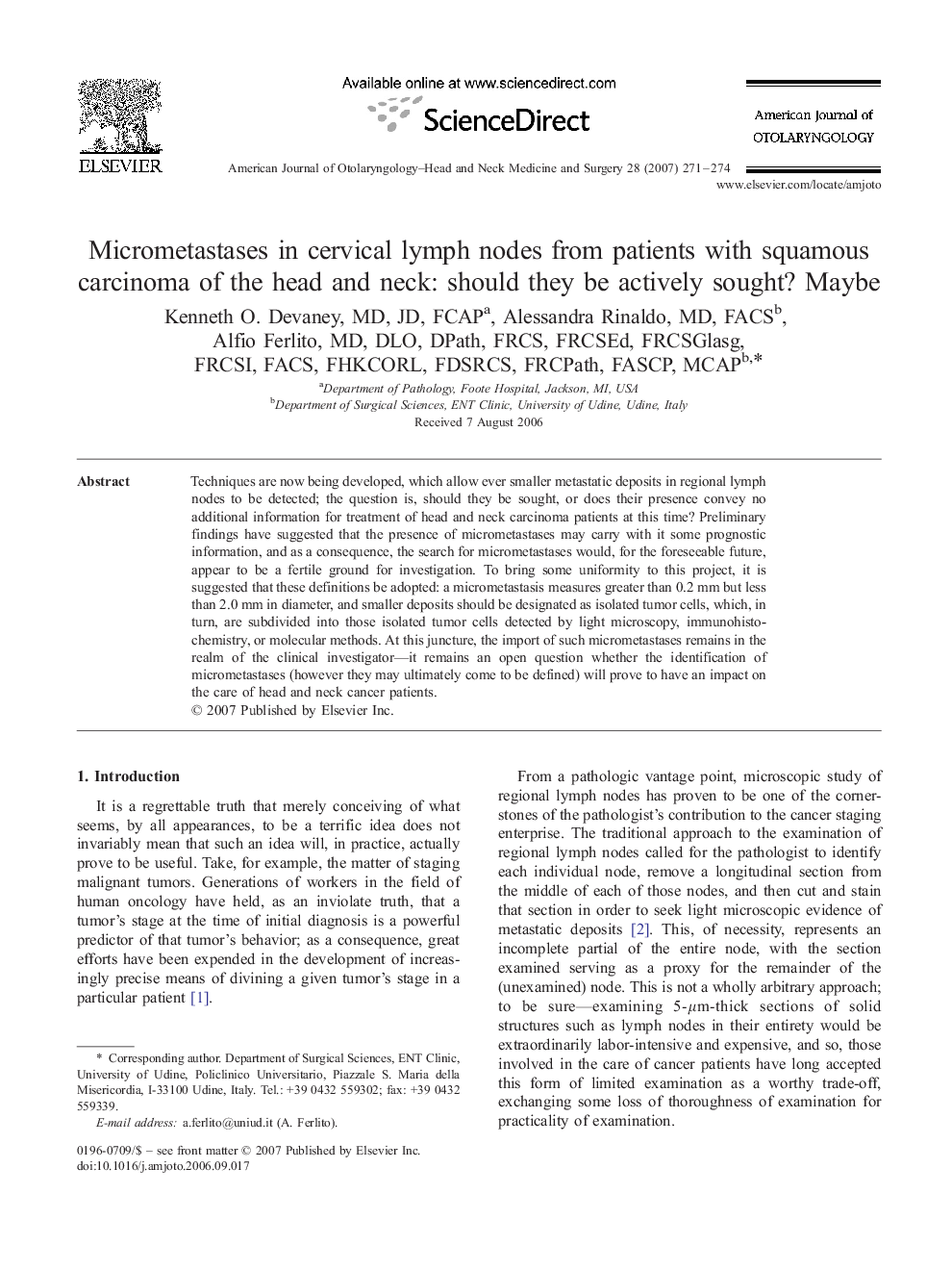| Article ID | Journal | Published Year | Pages | File Type |
|---|---|---|---|---|
| 4104321 | American Journal of Otolaryngology | 2007 | 4 Pages |
Techniques are now being developed, which allow ever smaller metastatic deposits in regional lymph nodes to be detected; the question is, should they be sought, or does their presence convey no additional information for treatment of head and neck carcinoma patients at this time? Preliminary findings have suggested that the presence of micrometastases may carry with it some prognostic information, and as a consequence, the search for micrometastases would, for the foreseeable future, appear to be a fertile ground for investigation. To bring some uniformity to this project, it is suggested that these definitions be adopted: a micrometastasis measures greater than 0.2 mm but less than 2.0 mm in diameter, and smaller deposits should be designated as isolated tumor cells, which, in turn, are subdivided into those isolated tumor cells detected by light microscopy, immunohistochemistry, or molecular methods. At this juncture, the import of such micrometastases remains in the realm of the clinical investigator—it remains an open question whether the identification of micrometastases (however they may ultimately come to be defined) will prove to have an impact on the care of head and neck cancer patients.
